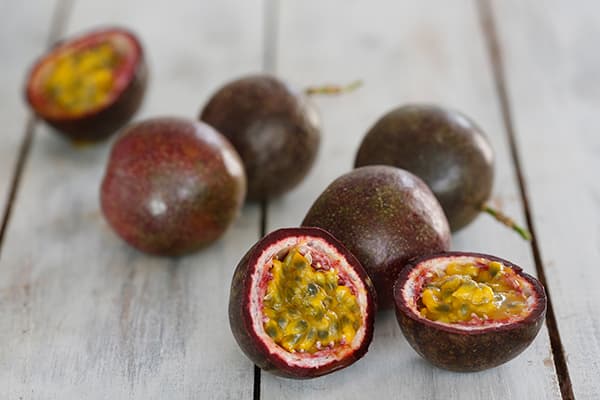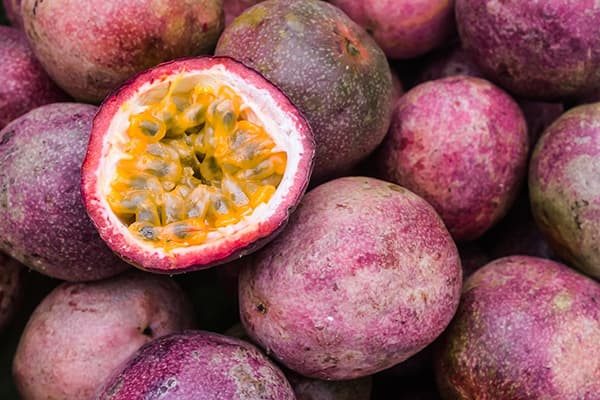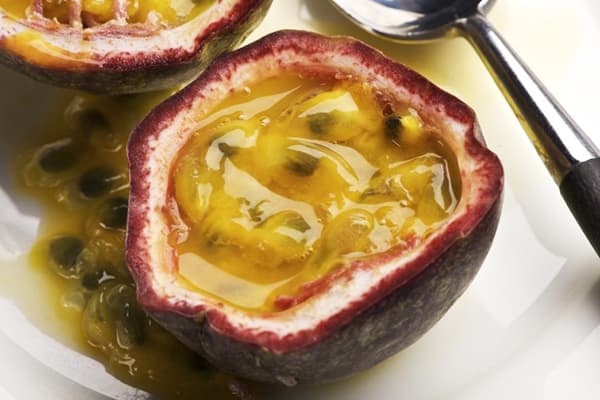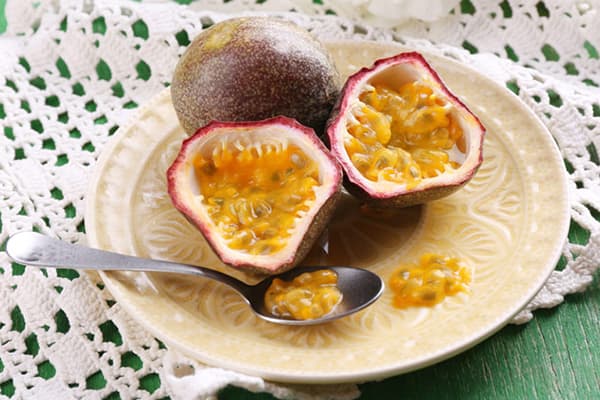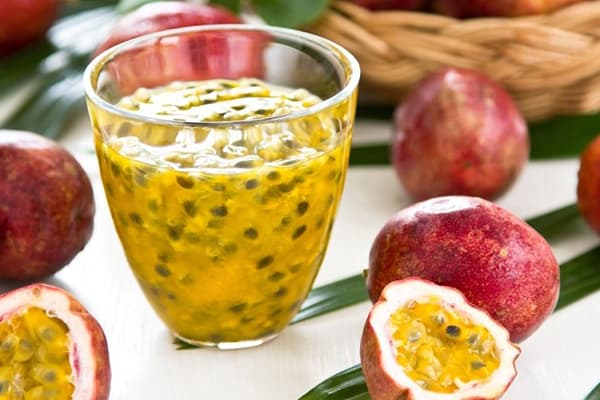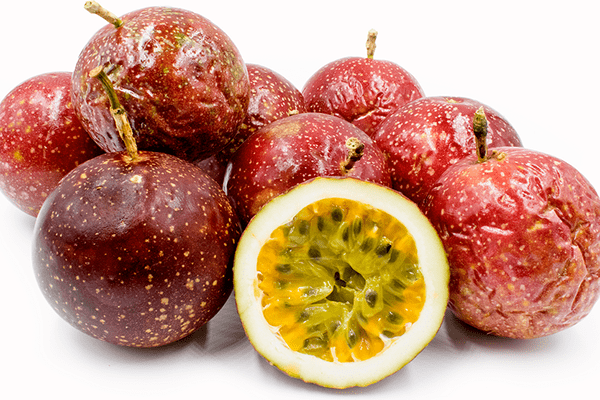How to choose and eat passion fruit in a regular supermarket?
Content:
Passion fruit has not been a shortage in our country for a long time, but many still do not know how to choose the right, delicious copy in the supermarket and what this exotic fruit actually is. How much they lose!
The core of passion fruit has an incredibly rich taste and is often used as an additive to juices, mousses, pastries. Moreover, passion fruit is a frequent component of body care cosmetics. Its benefits to the body are invaluable. Rich in vitamins and minerals and possessing anti-inflammatory, sedative and mild laxative properties, it can be used for therapeutic nutrition.
What does passion fruit look like?
Passion fruit is the fruit of the tropical vines of the genus Passiflora. Ancient culture today is grown commercially in Brazil, South America, South Africa, Thailand, Australia and several other countries. It grows exclusively in the tropics. Vines grow in groups, before fruiting, abundantly and beautifully bloom. The harvest season lasts from January to the first of May. Locals call passion fruit the grapes, and it is not surprising - they are rounded and slightly elongated, similar in shape to an oval. Under the dense skin hides a juicy jelly-like pulp with stones.
As for the color, size and taste of the fruit, they can vary depending on the variety. Conventionally, they are divided into sour and sweet. At the same time, the fruit always has a tart taste, what is the most similar to orange or lemon. But I must admit, very remotely. The diameter of the passion fruit can be both 40 and 120 mm.
In our country, 2 varieties of fruit are more common: with orange-yellow peel and with red-violet. Taste qualities of dark fruits are valued higher - they are sweeter, however, the demand for them is lower due to the worse transportability and resistance to diseases.
How to choose passion fruit?
Passion fruit is an exotic fruit, and therefore, when choosing it, it is correct to start from non-standard external signs. In this case, everything is exactly the opposite:
- elastic and light fruit - unripe;
- dark and with a skin in cracks - ripe, ready to eat right now.
Of course, you can purposefully choose light yellow or reddish fruits if you plan to serve them in a table in 2-3 days. Passion fruit has the ability to ripen. Just leave it at room temperature in a well-lit place (for example, on a windowsill).
The second important point that you should pay attention to when buying exotic fruits in a regular supermarket is weight. Ripe passion fruit is always heavier than unripe, despite the same size. Fans are advised to hold a couple of fruits in their hands and only then put the most weighty in the basket. But you can’t focus on the smell in this case - it is almost imperceptible behind a thick peel that reliably hides aromatic flesh.
Having decided suddenly to buy passion fruit abroad, one should not be surprised at a completely different name. In some countries it is called "chinola", in others it is "edible passionflower", and in America - "passion fruit", which means "passion fruit".
How to clean passion fruit?
The fruit does not need to be peeled in a special way. To eat it or use it for cooking, you need to make a longitudinal section and take out a jelly-like pulp with a spoon. It makes up approximately 50% of the fetus.
The rest is an inedible peel. Although in some countries they manage to make jam from it, grinding the whole fruit with pulp and sugar, then bringing to a boil over low heat.But the seeds of passion fruit are edible and pleasant to taste, but in large quantities they have sleeping pills. Therefore, sometimes the jelly pulp is separated from them: they use a mixer at the lowest speed, and then they pass everything through a sieve.
How they eat?
Passion fruit looks like a ready-made dessert in a cut. At home, they eat it that way - raking the pulp out of the peel with a spoon. If desired, it is sweetened with sugar or honey. There is a more exotic option - the pulp sprinkled with hot chili or a mixture of salt and pepper. It is in this form that they like to eat the fruits of passion fruit in Thailand and the Philippines.
And, of course, the fruit can be used to prepare a wide variety of dishes:
- fruit juices;
- mousse
- cakes;
- yoghurts;
- fruit drinks;
- ice cream;
- jelly.
Dried bones can be used to decorate pastries. Well-known cooks sometimes complement the spicy taste of pulp salads. And you can dry the passion fruit and make delicious aromatic tea with it.
How much is stored?
Shelf life of passion fruit depends on its degree of maturity. Slightly unripe fruits with elastic peels can safely lie in a cool room for a week. But most people are interested in how much ripe fruit is stored. The answer is no more than 5 days in the refrigerator. Cracked passion fruit is best eaten within 1-2 days. It can also be frozen. To do this, you must first peel, put the flesh on a plate and mix with a lot of sugar.
In hot tropical countries, passion fruit is most appreciated for its ability to quench thirst and tonic effect on the body. From the Native American language Tupi, which was also very common in Brazil, "mara kuya" meant "food in a bowl." Indeed, it is worth cutting the fruit into halves - and an invigorating and nutritious dish is ready to eat.
